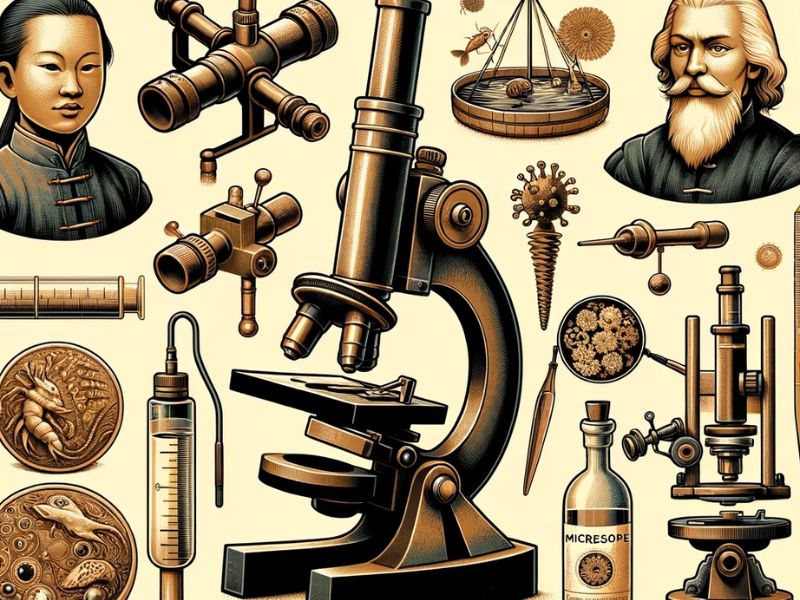
The origins of the microscope: a window into the micro world
A Journey Through the History of Microscopy
The Roots of Microscopy
The idea of the microscope has its roots in ancient times. In China, as early as 4,000 years ago, enlarged samples were observed through lenses at the end of a water-filled tube, achieving significant levels of magnification. This practice, remarkably advanced for its time, demonstrates that optical magnification was a known and utilized concept in antiquity. In other cultures as well, such as Greek, Egyptian, and Roman, curved lenses were used for various purposes, including surgical procedures. These early examples, though innovative, did not yet represent the microscope as we know it today but laid the groundwork for its future invention.
The Birth of the Compound Microscope
The true breakthrough in the history of microscopy occurred around 1590 when three Dutch lens makers – Hans Jansen, his son Zacharias Jansen, and Hans Lippershey – are credited with inventing the compound microscope. This new device, which combined multiple lenses in a tube, allowed for significantly greater magnification than previous methods. It became popular in the 17th century and was used by scientists such as Robert Hooke, an English natural philosopher, who began giving regular demonstrations to the Royal Society starting in 1663. In 1665, Hooke published “Micrographia“, a work that introduced a wide range of microscopic observations and greatly contributed to the spread of microscopy.
Antonie van Leeuwenhoek: The Father of Microscopy
Simultaneously with Hooke, Antonie van Leeuwenhoek, a Dutch merchant and scientist, developed simple yet extraordinarily powerful microscopes. Leeuwenhoek used these microscopes for his pioneering observations of microorganisms in water in 1670, thus inaugurating microbiology. He is known for his skill in lens production and his detailed letters to the Royal Society in London, which confirmed and disseminated his discoveries. Through these letters, Leeuwenhoek became a central figure in the development of microscopy.
Technological Progress
From the late 17th century, the optics of this instrument continued to advance rapidly. In the 18th century, significant progress was made in correcting chromatic aberrations, greatly improving image quality. In the 19th century, the introduction of new types of optical glass and an understanding of optical geometry led to further improvements. These developments laid the foundation for modern microscopy, enabling the exploration of the microscopic world with unprecedented precision and clarity.


